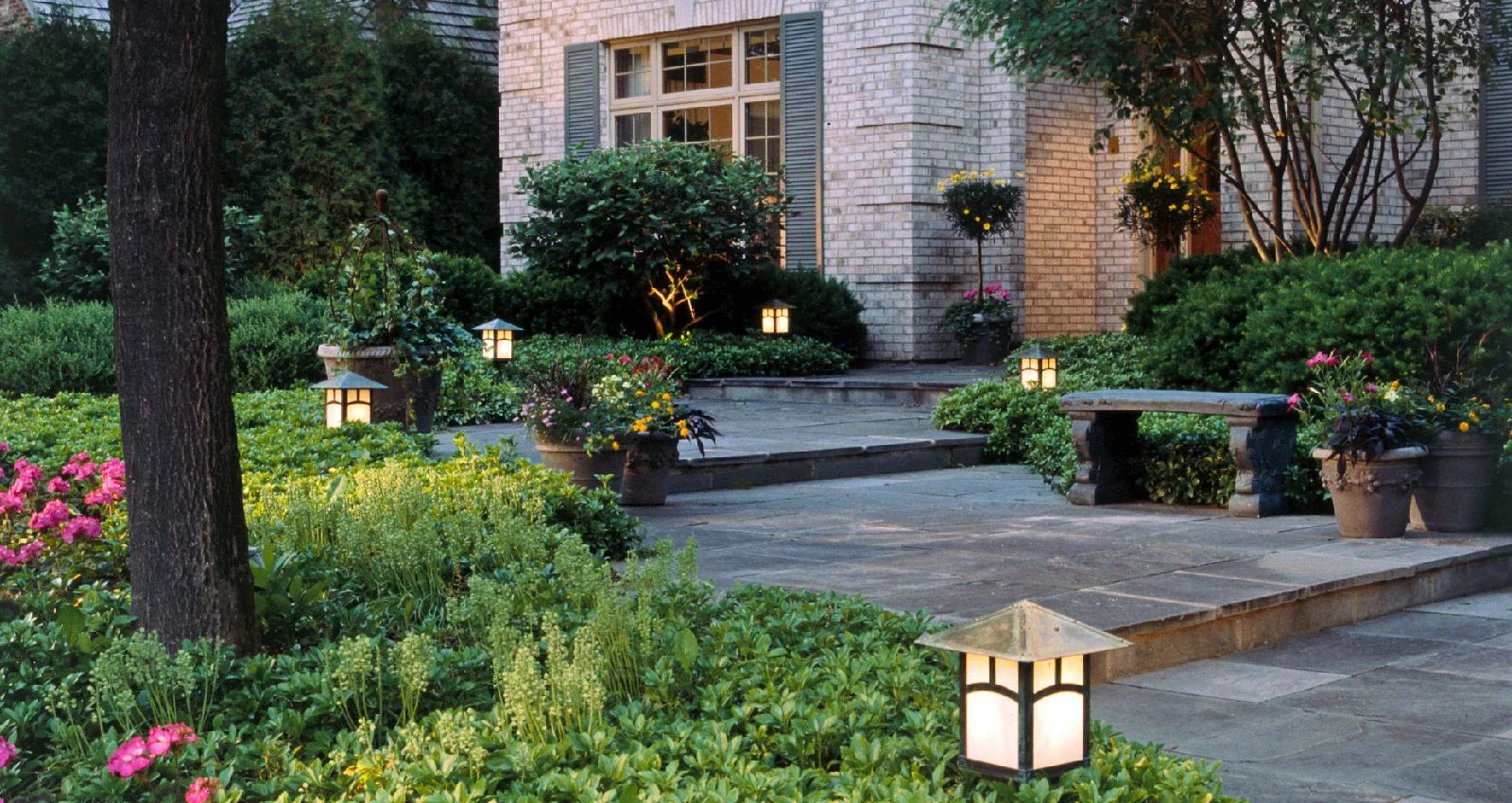When it comes to the aesthetics of your property, curb appeal plays a significant role. Expertly installed sidewalks and pathways not only enhance the visual appeal of your home but also provide practical benefits such as safety and accessibility.
In this article, we will delve into the importance of well-designed sidewalks and pathways and explore how they can elevate the overall look of your property.

Benefits of Sidewalks and Pathways
There exist numerous benefits of sidewalks and pathways installation including:
- Safety: Well-constructed sidewalks and pathways provide a designated space for pedestrians, ensuring their safety by keeping them away from vehicular traffic. This is especially important in residential areas where families with children or elderly individuals frequently walk.
- Accessibility: Sidewalks and pathways make your property more accessible to everyone, including individuals with disabilities or mobility challenges. ADA-compliant designs ensure that everyone can navigate your property comfortably and safely.
- Visual appeal: Professionally installed sidewalks and pathways add to the aesthetic appeal of your property. They create a cohesive look and enhance the landscaping with paved pathways, making your home more attractive to visitors and potential buyers.
- Defined spaces: Sidewalks and pathways help define different areas of your outdoor space, guiding visitors toward key features such as the entrance, patio, or garden. This creates a sense of organization and flow in your landscape design.
- Increased property value: A well-maintained exterior, including carefully planned sidewalks and pathways, can significantly boost the value of your property. Potential buyers are more likely to be impressed by a home with attractive outdoor features.
Design Considerations
When deciding to install sidewalks and pathways, you need to consider various options available for residential sidewalk design.
From traditional to contemporary styles, there are several factors to take into account to ensure that the design complements your home’s architecture and landscape.
Here are some key considerations:
- Materials: Choose materials that complement the style of your home and landscape. Options range from traditional concrete sidewalk installation and brick pavers to natural stone and stamped concrete sidewalk installation. Consider factors such as durability, maintenance requirements, and cost when selecting materials.
- Layout: Plan the layout of your sidewalks and pathways carefully to ensure optimal functionality and aesthetics. Consider factors such as the natural flow of foot traffic, the placement of existing landscaping features, and any potential obstacles or elevation changes.
- Width and slope: ADA guidelines recommend a minimum sidewalk width of 48 inches to accommodate wheelchair users and pedestrians walking side by side. Additionally, ensure that pathways have a gentle slope to allow for proper drainage and easy navigation.
- Lighting: Incorporating lighting along your sidewalks and pathways enhances visibility and safety, especially during the evening hours. Options include overhead lighting fixtures, ground-level path lights, and decorative lanterns.
Installation Process
Be it residential sidewalk design or concrete sidewalk installation, the common process for sidewalks and pathway installation is as follows:
- Site preparation: The first step for creating paving walkways and pathways involves clearing the area and preparing the ground for construction. This may include removing existing vegetation, grading the terrain, and compacting the soil to create a stable base.
- Base installation: A sturdy base layer, typically consisting of crushed stone or gravel, is installed to provide structural support and promote proper drainage.
- Edge restraints: Edge restraints, such as concrete curbs or plastic paver edging, are installed along the perimeter of the paving walkways and pathways to contain the paving materials and prevent them from shifting over time.
- Paving installation: The chosen paving materials are carefully laid out according to the predetermined design, taking care to maintain proper alignment and spacing between each element.
- Finishing touches: Once the paving is complete, any necessary adjustments are made, and the surface is compacted to ensure stability. Sealing or grouting may be applied to enhance durability and aesthetics.
Maintenance Tips
- Regularly inspect sidewalks and pathways for signs of damage or wear, such as cracks, uneven surfaces, or loose paving materials.
- Keep pathways clear of debris, vegetation, and other obstructions to ensure safe and easy passage.
- Perform routine cleaning, such as sweeping or power washing, to remove dirt, stains, and debris.
- Address any maintenance issues promptly to prevent minor problems from escalating into more significant repairs.
Conclusion
Expertly installed sidewalks and pathways are essential elements of well-designed landscaping with paved pathways, offering both functional and aesthetic benefits.
By prioritizing safety, accessibility, and visual appeal, you can enhance the curb appeal of your property while creating a welcoming and inviting outdoor environment for residents and visitors alike.
Whether you’re considering a new installation or renovating existing pathways, investing in professional design and installation services can help you achieve the desired results and maximize the value of your home.
FAQs
Q1: How long does it take to install a sidewalk or pathway?
A1: The duration of the installation process depends on the size and complexity of the project, as well as the materials used. On average, a small to medium-sized project may take anywhere from a few days to a week, including site preparation, base installation, paving, and finishing touches.
Q2: What is the best material for sidewalks and pathways?
A2: The best material depends on your aesthetic preferences, budget, and maintenance requirements. Common options include concrete, brick pavers, natural stone, and stamped concrete. Each material has its advantages in terms of durability, appearance, and cost.
Q3: How do I ensure my sidewalks and pathways comply with ADA guidelines?
A3: To ensure compliance with ADA guidelines, sidewalks and pathways should have a minimum width of 48 inches, a gentle slope for proper drainage, and a surface that is stable, firm, and slip-resistant. It’s advisable to consult with a professional installer who is familiar with ADA requirements to ensure your project meets all necessary standards.
